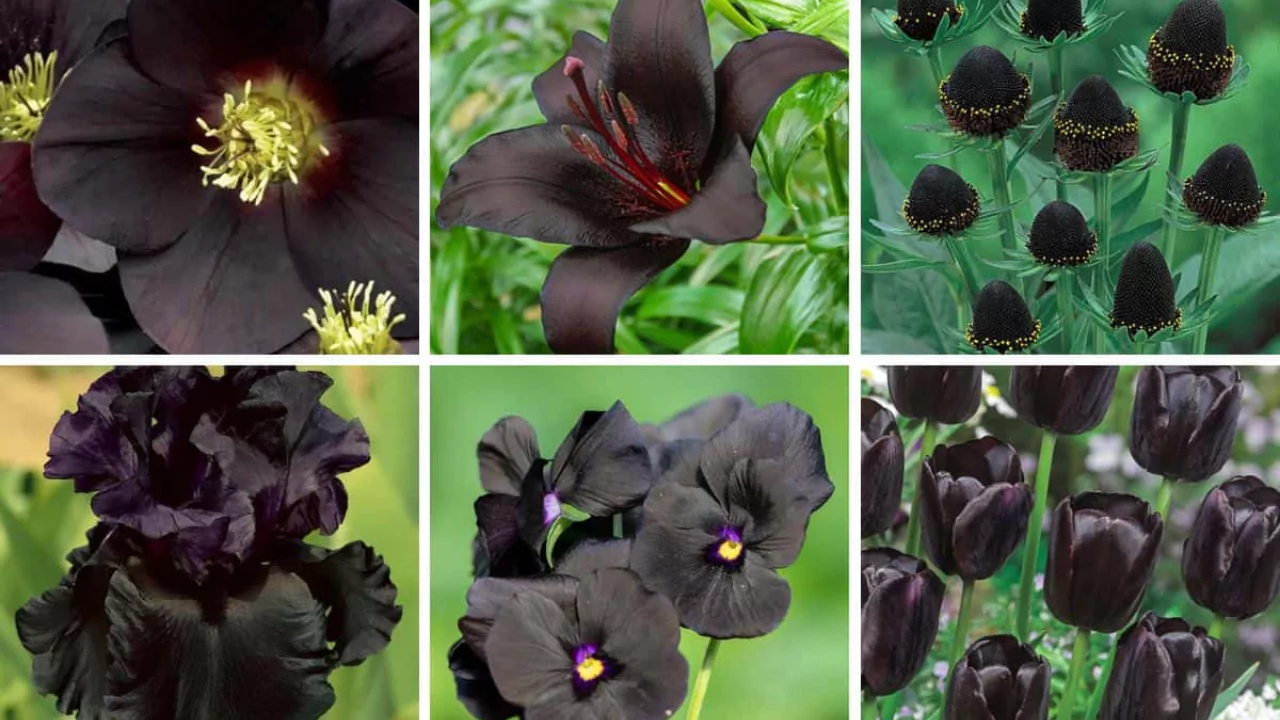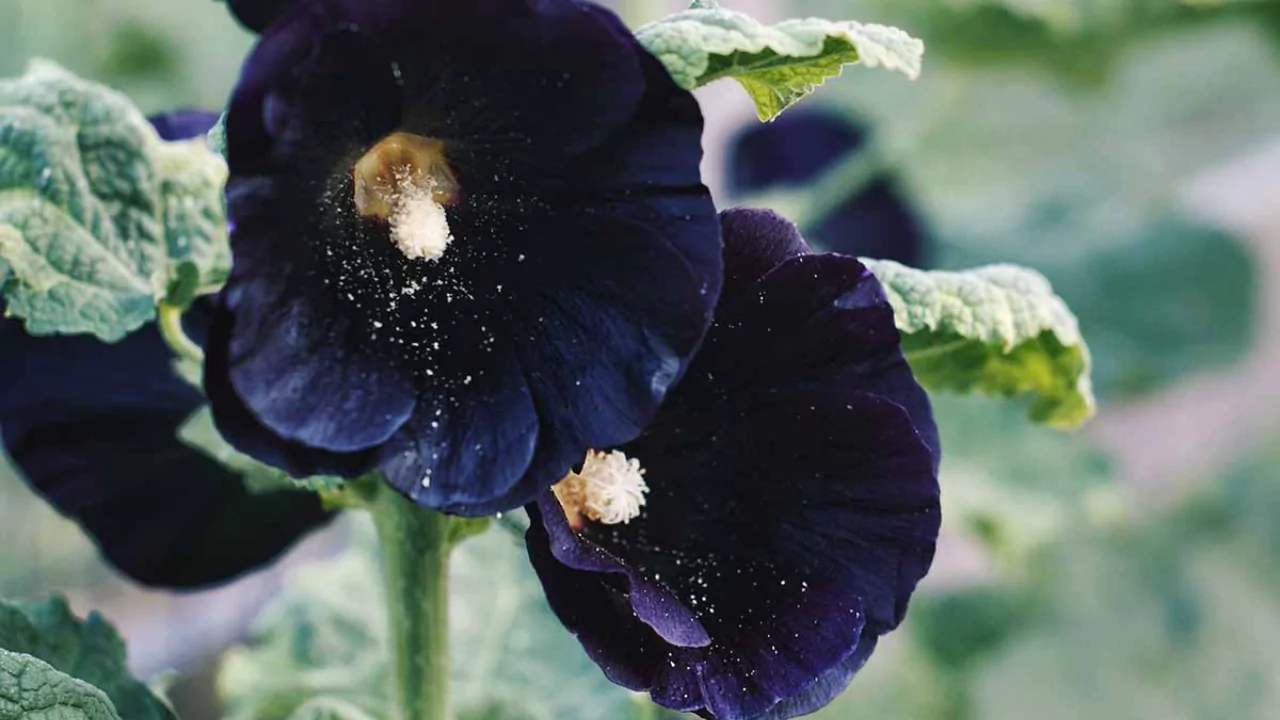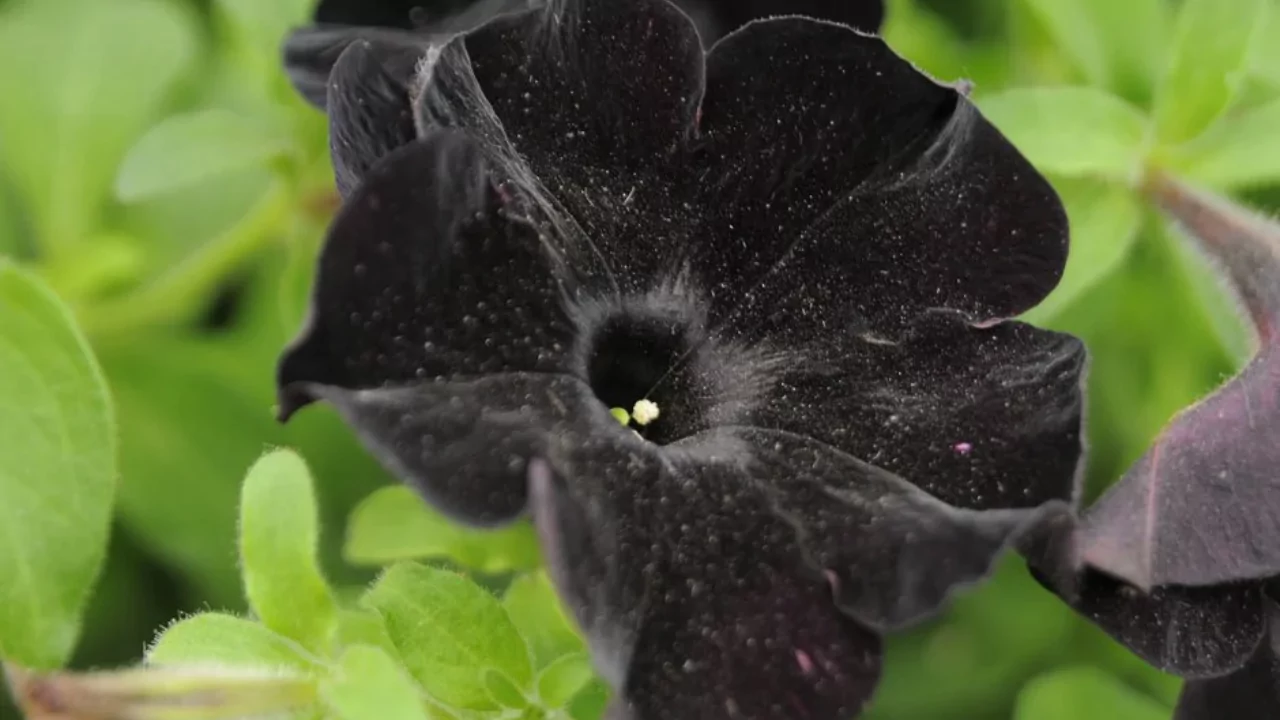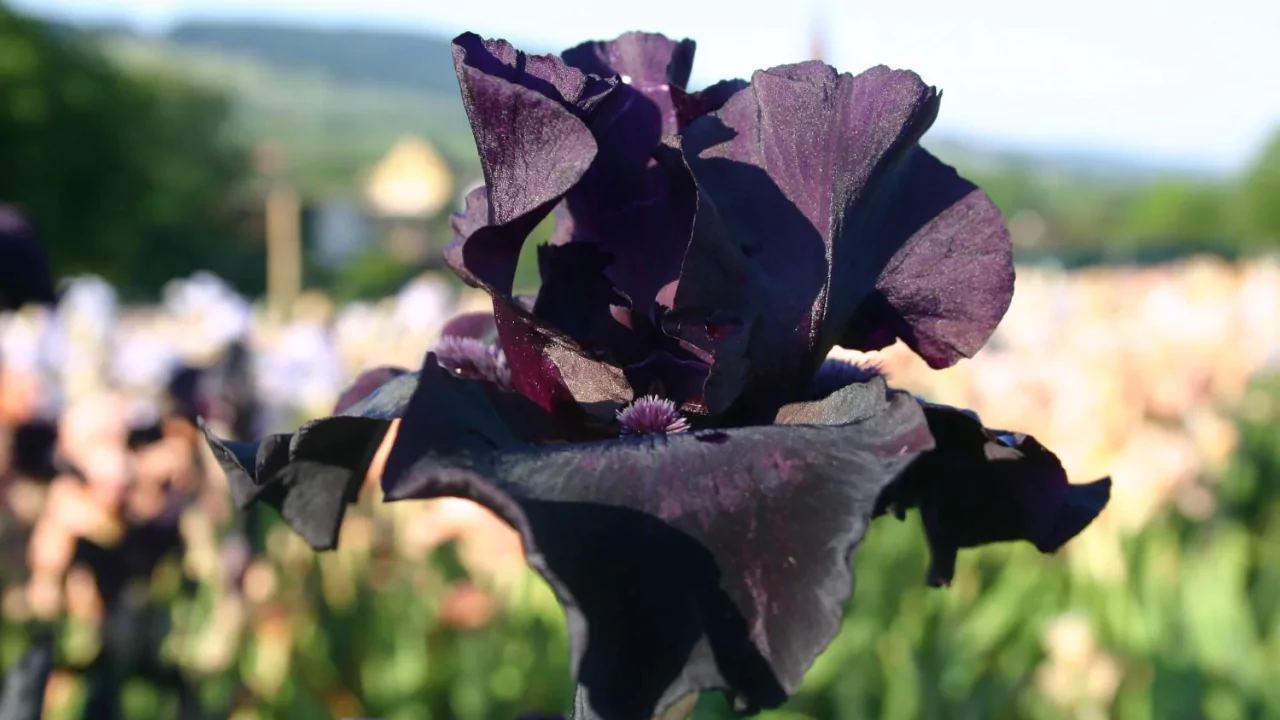
If you wish to add a touch of exotic charm to your garden this season, growing black flowers will do just that. The color black is elegant, but it holds an air of suffocating mystery. Symbolically it represents death, fear, evil, authority, rebellion, formality, and dissenting grace.
In American culture, black is associated with grief and mourning. Since black is devoid of color, it can also signify emptiness, darkness, or the void.
In the media, black is often associated with villains and enemies, while a hero typically wears white. (Check out our white flower list here.) The color black instills the impression of confidence which in turn exudes authority and professionalism. Black flowers have the potential to add that swagger to your garden.
While black is associated with negative connotations, the right amount of black can serve as the perfect balance. Some may see it as a dark choice, but black flowers have the potential to bring attention to other bold colors in your garden beds and accent them perfectly.
Let’s be very clear here. We understand that most gardeners will not choose solely black flowers for their yards. However, if the primary color of your flowers is red, orange, pink, or yellow, adding a few black flowers for contrast will enhance the brighter blooms you selected.
Imagine your garden brimming with various shades of red and accentuated with splashes of black here and there. Now that is truly stunning.
The following list includes what we consider to be the best black flowers to incorporate into your garden. You will also find information on their growing tips, preferences for soil and sunlight, and the growing zones where each can thrive.
In an effort to develop a singular assortment of blooms, we have featured the most distinct and eye-catching flowers that we could find, meaning that there are no overused, modern garden staples included in this selection.
Furthermore, we strive to lean towards a more resilient balance within the collection, as plants that require fussy, tender care are often too much work for too little reward for gardeners.
Moreover, a closed handful of struggling or dead flowers amid a vibrant garden create an affront to an otherwise flawless snapshot.
There are particular black flowers that because of specific attributes, should be incorporated into every garden, and these flowers are gems. Choosing your favorites and the lowlights that will accentuate and elevate your garden to a symphony of colors is the goal here.
Black Magic Hollyhock

This dark flower requires tall stakes for support, as the blossoms are black and cup-shaped with a height of ten feet. Their stalks are leafy and can reach a height of 10 feet and will dominate the garden.
The Black Magic Hollyhock Alcea rosea is ideal for placement against walls or borders of gardens, as they are set at the rear. This border allows them to be the last ones to bloom which ensures they do not overshadow smaller flowering plants.
The petals of hollyhocks are slender and seem to be darker than every petal. Rather than true black, they are deep blue with hints of purple and reddish color. In late autumn, aspiring gardeners can cut these plants after the last blooms have seeded.
Black Magic Hollyhocks flourish in zones 3-9 where full sun, and well-drained soil is abundant.
Black Velvet Petunia

Hailing from 2010, this new addition to the gardening scene is a hybrid of purple petunia and, to untrained eyes, it’s as black as black can get.
Close inspection reveals that the blossoms have hints of purple. The petals are velvet soft, and the blossoms are fast growing. If left unrestricted, these plants can rapidly dominate a garden bed.
These hardy ground-covering sprawlers are able to withstand light frosts, and will darken any open garden space. Black Velvet petunia (Petunia hybrida) best performs when surrounding plants provide light cover from wind and overwatering.
Zone 9 to 11 petunia cultivars thrive under full sunlight and dry well-drained soil.
Before the Storm Iris

The bearded iris flower comes in every color imaginable thanks to endless hybrid creations by botanists. However, the Before the Storm tall bearded riz variety is arguably one of the most stunning and awe-inspiring irises to ever bloom.
Just like its name suggests, Before the Storm is a deep purple-black iris with hints of an inviting scent. It attracts birds, bees, and butterflies to assist with pollination. bloom From late spring to early summer, Before the Storm irises are drought resistant and easy to grow.
Irises are best suited for zones 3-9, can withstand shade and sunlight, and prefer well-drained soil.
Molly Sanderson Viola
Viola flowers are also known as pansies and are hardy flowers. The pansy flower, which the Molly Sanderson Viola belongs to, is a wonderful candidate for garden beds and pots.
Violas can endure moist soil, allowing them to bloom plentifully in spring and fall. However, drought remains a key enemy for violas. Mollie Sanderson Black Belles tend to have long blooming seasons as long as their soil stays moist.
Molly Sandersons can easily be blended to light-blue or yellow flowers due to their creamy centers and are perfect as ground covers or borders.
Violas thrive in full sunlight, as well as in moist, well-drained soil. Plant violas between zones 4 to 8.
Black Bat Flower
The black bat flower almost got disqualified from our final list simply because it only flourishes in one growing zone (Tacca chantieri). Still, this orchid’s bloom is just too peculiar to ignore.
Another name for this flower is devil flower, also known as cat’s whiskers which resembles a bat in flight, hence its nickname the black bat flower.
The black bat flower is incapable of growing outside warm subtropical to tropical climates in a garden. The good news is that if you have an indoor garden, or happen to live in the suitable regions, this flower might be the actual showstopper in your garden.
This black bat flower only grows in zone 11 and enjoys partial shade, as well as well-drained soil.
Onyx Odyssey Hellebore
To the naked eye, the Onyx Odyssey hellebore appears as a deep burgundy bloom that is nearly black. This spring flowering perennial has a leather-like leaves that are almost black. They frame the bloom, which has tiny yellow petals resembling stamens emerging from its center.
The Onyx Odyssey hellebore performs the best in springtime gardens as it flaunts a stunning floral display that lasts between six to eight weeks. When planting hellebores, be careful not to allow them to sink too deeply, as the crown of the plant must remain just below the soil surface.
Make sure to provide proper air circulation both above and below the ground for the plants, as hellebores tend to like well-aerated soil. Try to avoid crowding other plants too close to these flowers, especially aggressive invasive species that tend to suffocate the plants around them and encroach on their territory.
The Onyx Odyssey hellebore will flourish in zones -5-9 with full sun to partial shade as well as well-drained soil.
Arabian Night Dahlia
Arabian Night dahlias are black dahlia varieties whose flowers bloom to reach a deceptively deep purple-red hue that, when in the shade, resembles black. However, this plant only needs shade during the hottest hours of the afternoon.
The large round blooms are created by thickly clustered spiky petals. Dahlias are commended for their value as cut flowers because, if properly cared for, they look healthy and vibrant for several days post-arrangement if fresh water is provided daily.
Dahlia’s preference for warmer temperatures means they are unsuitable for colder climates. Ground temperature should be 60 degrees Fahrenheit or above before anytime is taken to prepare for planting.
Zones 8-10, full sun exposure, moist yet well-drained soil, and full sunlight exposure are also preferred for Arabian Night dahlias.
Rose, tulip, and calla lilies all come in black and add refinement to one’s garden. However, of the seven black flowers outlined here, these are the ones we deem most critical to the collection.
In selecting blossoms to accentuate a series of colorful flowers, you cannot go wrong with these seven black flowers. Each of them is distinct in their own right and serves a wholly different purpose as well.
If you want to landscape with black as a tribute to your Morrissey fandom, or if you’re simply cultivating a sophisticated floral aesthetic, don’t hesitate to use the most stunning black flowers you can find.